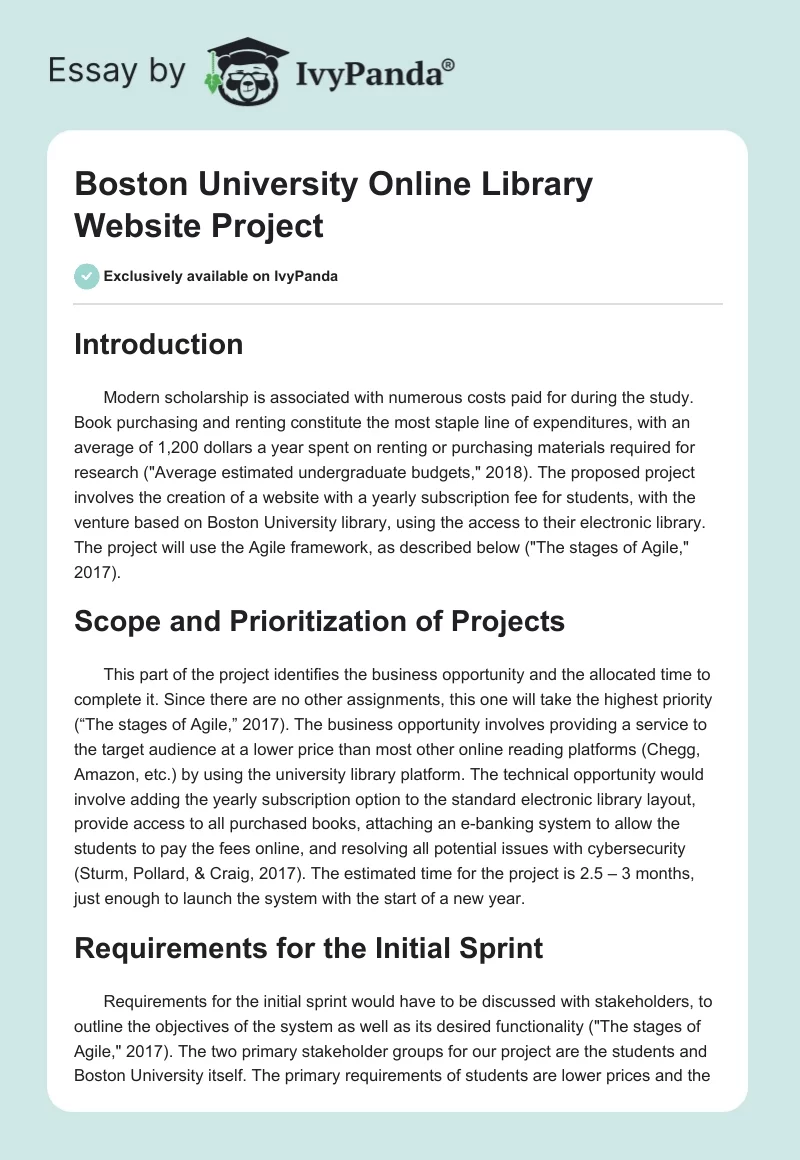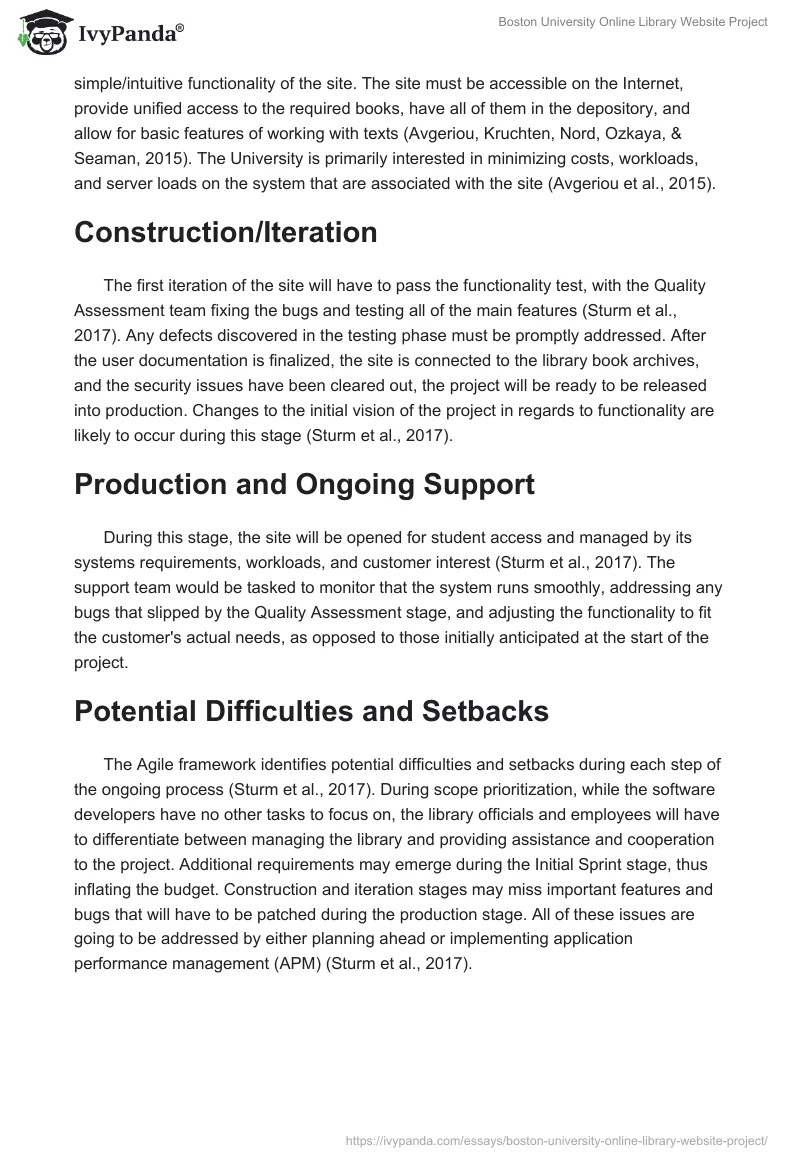Introduction
Modern scholarship is associated with numerous costs paid for during the study. Book purchasing and renting constitute the most staple line of expenditures, with an average of 1,200 dollars a year spent on renting or purchasing materials required for research (“Average estimated undergraduate budgets,” 2018). The proposed project involves the creation of a website with a yearly subscription fee for students, with the venture based on Boston University library, using the access to their electronic library. The project will use the Agile framework, as described below (“The stages of Agile,” 2017).
Scope and Prioritization of Projects
This part of the project identifies the business opportunity and the allocated time to complete it. Since there are no other assignments, this one will take the highest priority (“The stages of Agile,” 2017). The business opportunity involves providing a service to the target audience at a lower price than most other online reading platforms (Chegg, Amazon, etc.) by using the university library platform. The technical opportunity would involve adding the yearly subscription option to the standard electronic library layout, provide access to all purchased books, attaching an e-banking system to allow the students to pay the fees online, and resolving all potential issues with cybersecurity (Sturm, Pollard, & Craig, 2017). The estimated time for the project is 2.5 – 3 months, just enough to launch the system with the start of a new year.
Requirements for the Initial Sprint
Requirements for the initial sprint would have to be discussed with stakeholders, to outline the objectives of the system as well as its desired functionality (“The stages of Agile,” 2017). The two primary stakeholder groups for our project are the students and Boston University itself. The primary requirements of students are lower prices and the simple/intuitive functionality of the site. The site must be accessible on the Internet, provide unified access to the required books, have all of them in the depository, and allow for basic features of working with texts (Avgeriou, Kruchten, Nord, Ozkaya, & Seaman, 2015). The University is primarily interested in minimizing costs, workloads, and server loads on the system that are associated with the site (Avgeriou et al., 2015).
Construction/Iteration
The first iteration of the site will have to pass the functionality test, with the Quality Assessment team fixing the bugs and testing all of the main features (Sturm et al., 2017). Any defects discovered in the testing phase must be promptly addressed. After the user documentation is finalized, the site is connected to the library book archives, and the security issues have been cleared out, the project will be ready to be released into production. Changes to the initial vision of the project in regards to functionality are likely to occur during this stage (Sturm et al., 2017).
Production and Ongoing Support
During this stage, the site will be opened for student access and managed by its systems requirements, workloads, and customer interest (Sturm et al., 2017). The support team would be tasked to monitor that the system runs smoothly, addressing any bugs that slipped by the Quality Assessment stage, and adjusting the functionality to fit the customer’s actual needs, as opposed to those initially anticipated at the start of the project.
Potential Difficulties and Setbacks
The Agile framework identifies potential difficulties and setbacks during each step of the ongoing process (Sturm et al., 2017). During scope prioritization, while the software developers have no other tasks to focus on, the library officials and employees will have to differentiate between managing the library and providing assistance and cooperation to the project. Additional requirements may emerge during the Initial Sprint stage, thus inflating the budget. Construction and iteration stages may miss important features and bugs that will have to be patched during the production stage. All of these issues are going to be addressed by either planning ahead or implementing application performance management (APM) (Sturm et al., 2017).
References
Avgeriou, P., Kruchten, P., Nord, R. L., Ozkaya, I., & Seaman, C. (2015). Reducing friction in software development. IEEE Software, 33(1), 66-73.
Average estimated undergraduate budgets by sector, 2018-19. (2018). Web.
Sturm, R., Pollard, C., & Craig, J. (2017). Application performance management (apm) in the digital enterprise: managing applications for cloud, mobile, iot and ebusiness. Burlington, MA: Morgan Kaufmann.
The stages of Agile software development lifecycle. (2017). Web.


